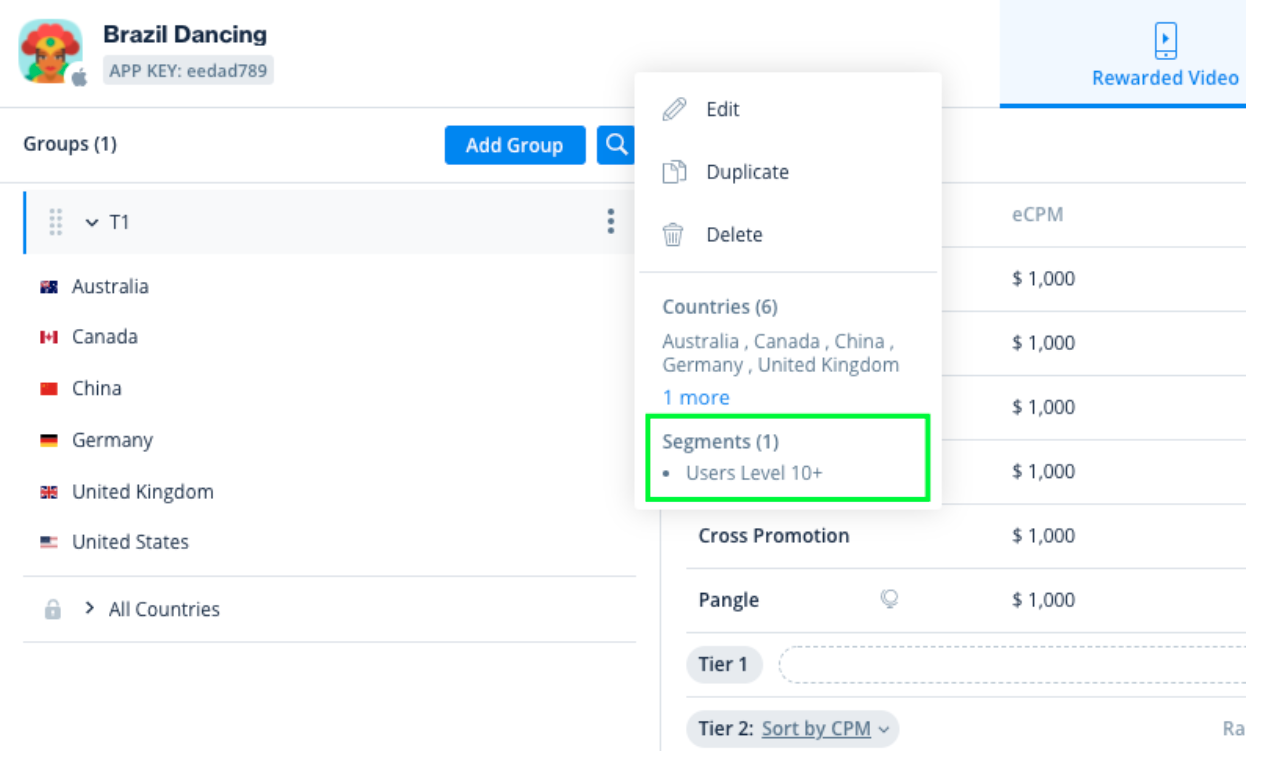Segments best practices
Proper user segmentation is a valuable component of any successful in-app monetization strategy. There is no one-size-fits-all approach to segmentation, so you want to make sure your ad strategy is as diverse as your users. With Unity LevelPlay’s segments tool, you can tailor your users’ ad experiences based on a vast number of conditions, as well as continually analyze and test unique strategies for a compelling user experience.
Regardless of how simple or complex your segmentations are, these are the best practices you should follow to maximize your application’s potential:
- Decide how you want users to experience your application Before setting any segments, analyzing KPIs, or optimizing your strategy, think creatively about how you believe users should engage with ads in your application, and how that experience may impact other parts of the app. Think holistically and individually. How should ads be applied in general, and how do you want to diversify the ad experience based on your preferences? Once you decide, continue to be curious and perfect your strategy over time.
- Understand your audience personae Every app, genre, and country, has unique users with unique characteristics. Understand who your audience is, and tailor your approach accordingly. For example, users past level 10 may be willing to watch more rewarded videos at a lesser value per view, so you may want to adjust capping rules and reward amounts for this segment.
- Evaluate performance on an application level and segment level It’s important to understand how each unique segment is contributing to an application’s overall performance. Use the Performance and User Activity reports in your ironSource account to measure the impact on revenue and user engagement KPIs for each segment independently. For example, if you have one segment with a relatively low engagement rate (% of DAU engaging with an ad unit) but a high ARPDEU (average revenue per daily engaged user), you would use this level of data granularity to focus your optimization efforts on the segment’s engagement rate to maximize revenue.
- A/B test your segments When deciding how to segment your users, A/B test your strategy before applying any changes to your full audience. ironSource’s A/B testing module lets you try out different segment settings and get valuable insights on whether those changes boost ARPDAU and retention. We recommend testing the following segments:
-
- Payer vs. Non-payer reward amount
- IDFA vs IDFV waterfall optimization
- Increase or decrease capping and pacing rules in high-traffic geos
- Exponential rewards (increasing reward amount as user progresses)
- Adjusting ad behavior for the first-time user experience (FTUE)
-
- Rank your segments When multiple segments are defined, it’s possible that users will fall into more than one segment. Prioritize your segments by level of importance, which can be decided based on revenue KPIs, retention goals, or game-flow design elements.
- Combine placements and mediation groups with your segments Segmentation does not have to be applied across an entire application. There may be situations that call for an adjustment to the ad behavior of one placement for a segment, while maintaining the ad behavior of another placement for the same segment. For example, you could decide to turn off a rewarded video ad placement that rewards your application’s main purchase currency for players that have already spent money on in-app purchases.

Also, the example where users past level 10 may be willing to watch more rewarded videos at a lesser value per view may only apply in particular countries. In that case, you should only apply this segment rule to a particular mediation group:

Learn more about best practices for placements here.
